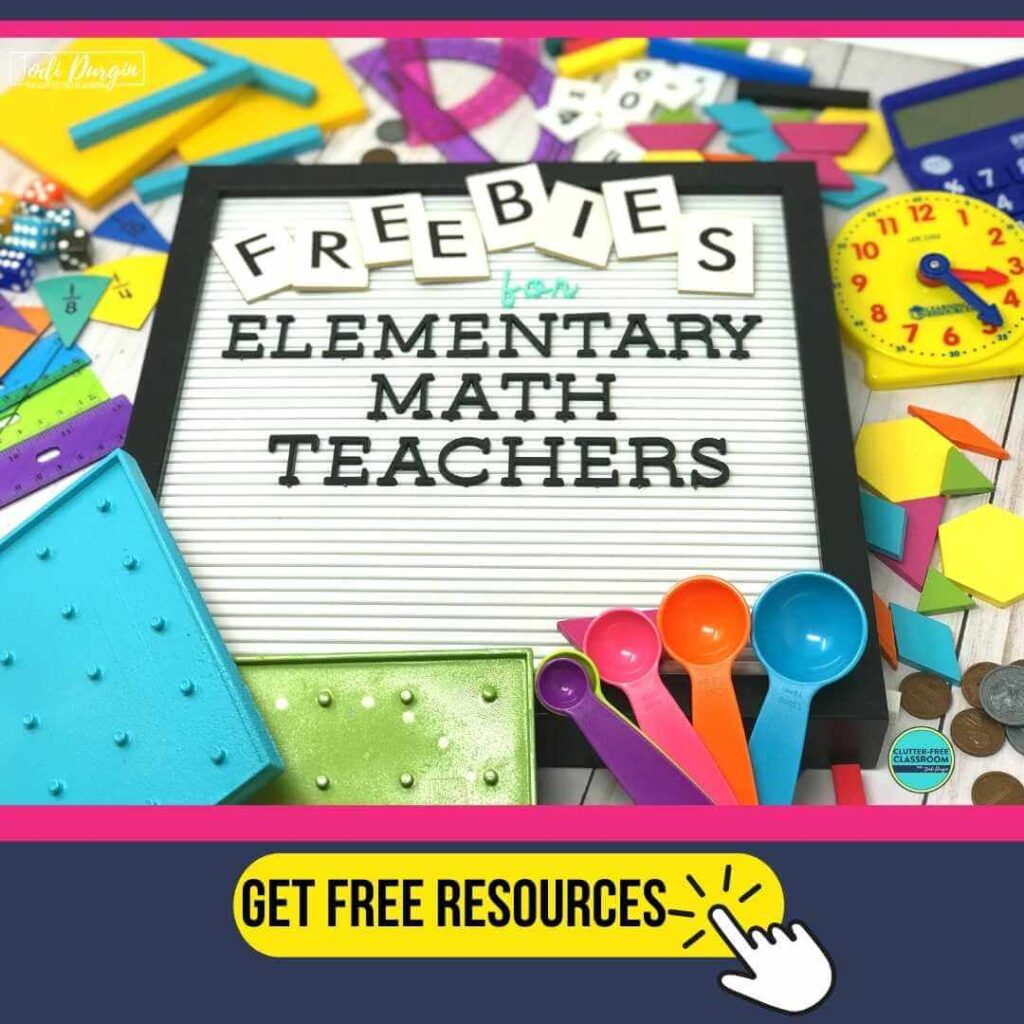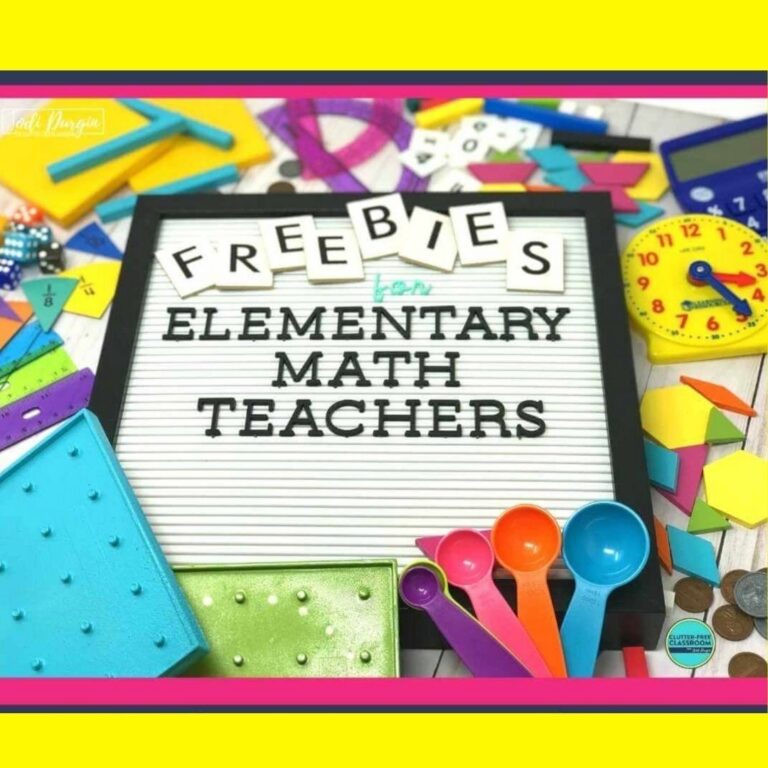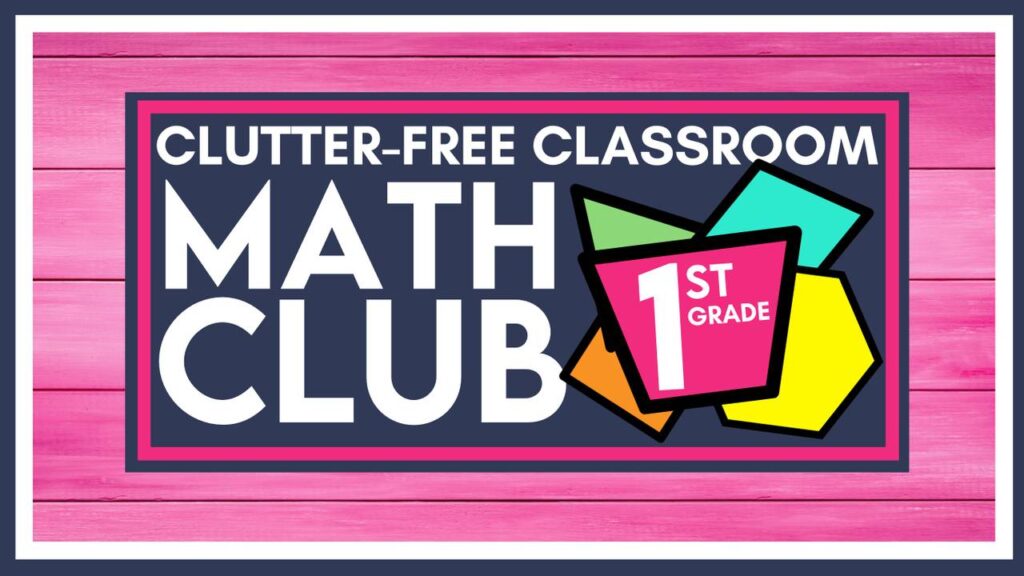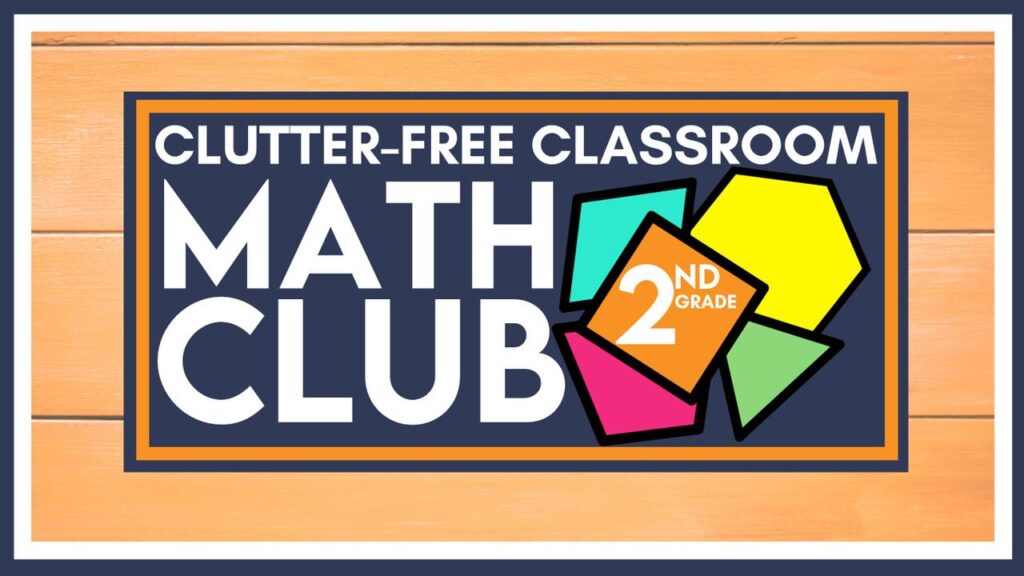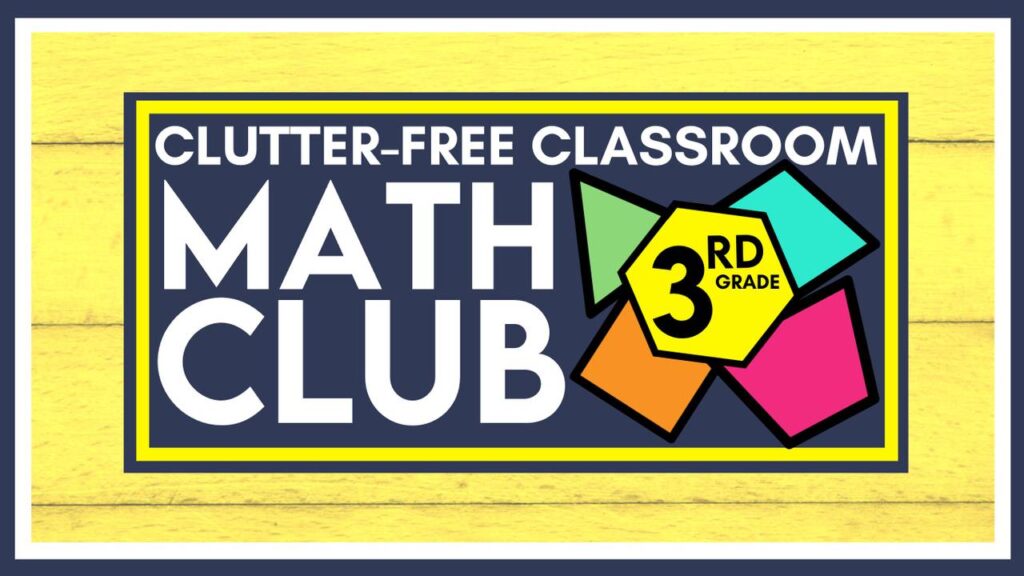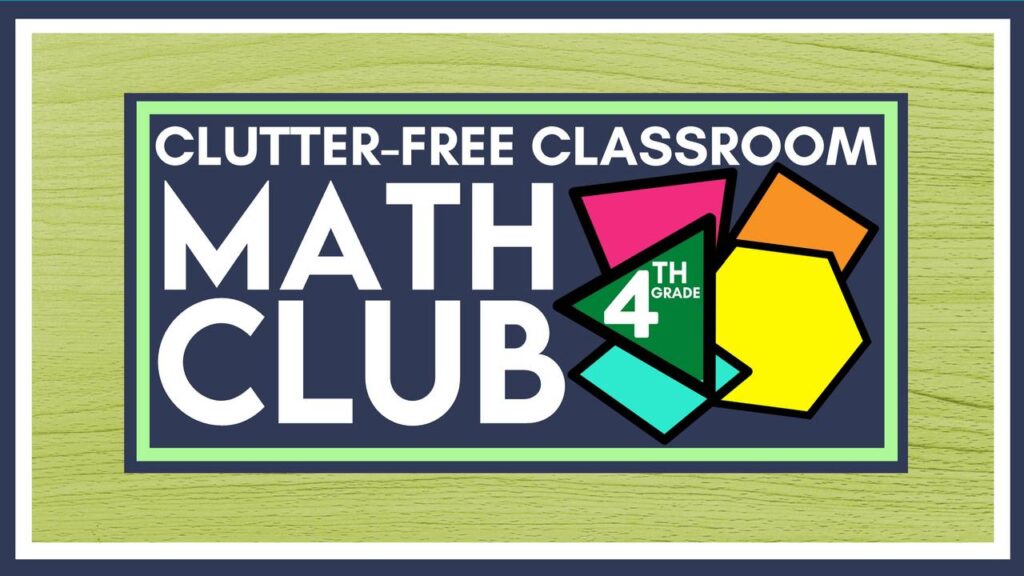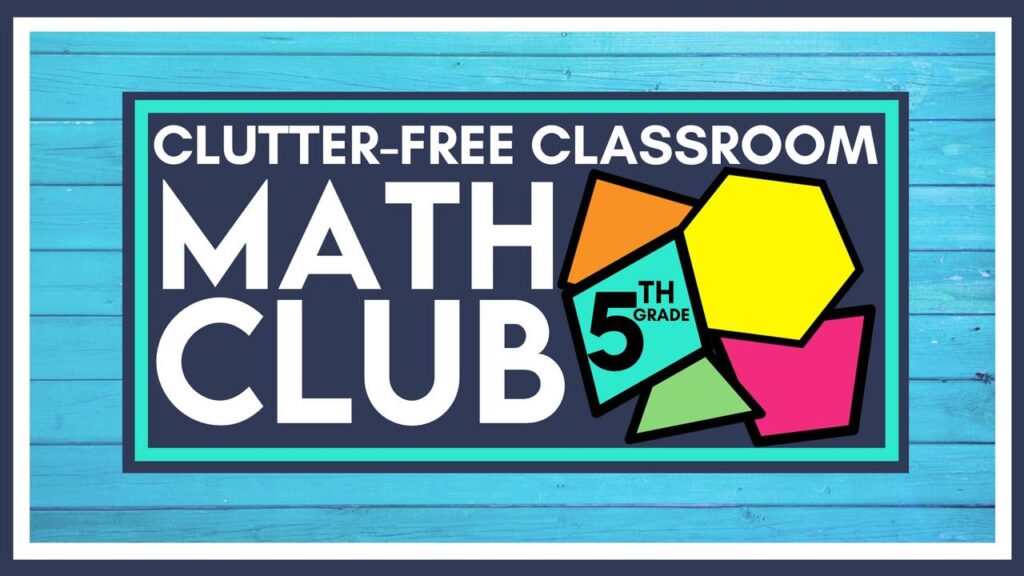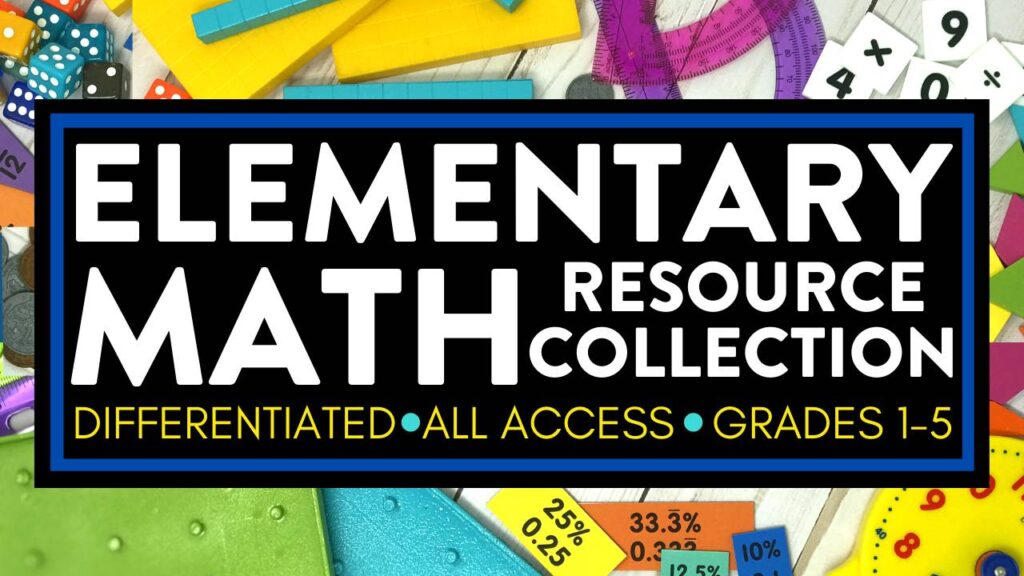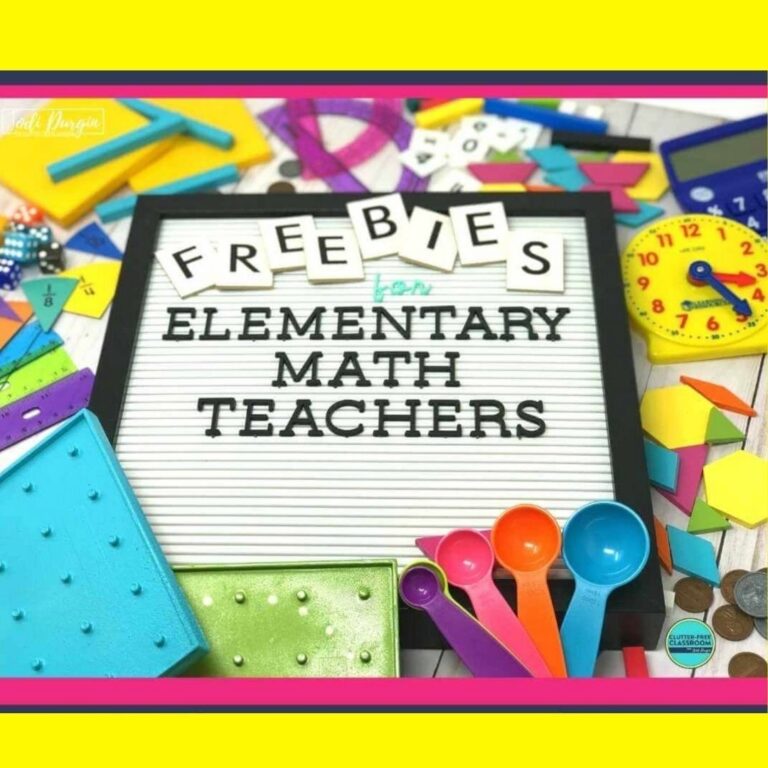This post will share what digital manipulatives for math are and why they are important for math instruction. In addition, it will identify their limitations and offer tips and ideas for using them. Finally, it will offer specific examples of what you need and a list of the best resources out there. Before I get into all of that, let’s go back in history for a minute.
COVID-19 changed everything. Prior to 2020, remote teaching, distance teaching, virtual teaching, and hybrid teaching were not common terms. Now, teachers across the country (and world) use these words and phrases every day. As teachers transitioned back to the classroom, many things went back to normal. However, many changes made during the COVID-19 pandemic are here to stay.
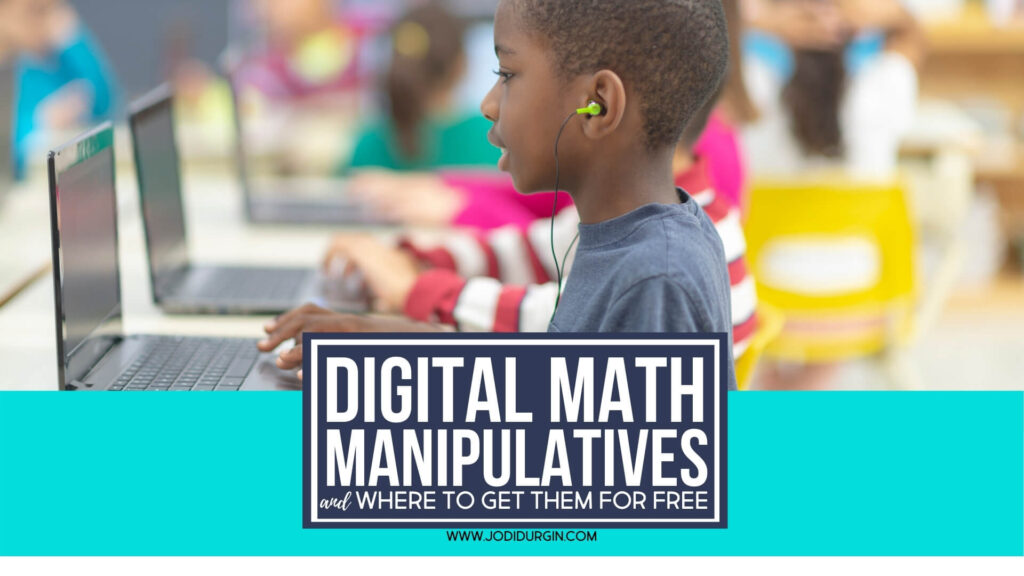
One of those changes is the expanded use of technology to support student learning. We have learned so much about Seesaw, Google Classroom, and other digital platforms. Some teachers were using these tools before. However, they were likely not using them to the full extent that they were during remote learning. In addition to using digital platforms, we used Google Slides, Google Forms, and other digital resources. Luckily, investing time and money into these resources was not a loss. We can continue using them for in-person teaching and homework.
This post is going to focus on one of the digital resources that became essential during the pandemic: Digital manipulatives. They are also commonly called virtual manipulatives and online manipulatives. There are several great resources out there that offer free virtual math manipulatives online that I will share below. I’ll also share a list of online tools you may need (e.g. virtual base ten blocks and unifix cubes). Read below to learn everything you need to know about digital manipulatives!

What are Digital Manipulatives?
Digital manipulatives are interactive models of math tools that students can access on a technology device. Most often students access them using a desktop computer, laptop, or iPad. They can often be navigated using a mouse or touch screen. They’re great because they give students the opportunity to work with math manipulatives when hands-on manipulatives aren’t accessible (e.g. homework). This type of manipulative became very popular during the COVID-19 pandemic. Some examples of digital manipulatives are online unifix cubes, base ten blocks, and coins. Synonyms are virtual manipulatives and online manipulatives.
What are Virtual Manipulatives?
Virtual manipulatives are the same as digital manipulatives. These terms are often used interchangeably. In simple terms, they are online tools students can use to understand, represent, and solve math problems. Some examples of math tools that are often modeled are base 10 blocks, coins, and cuisenaire rods.
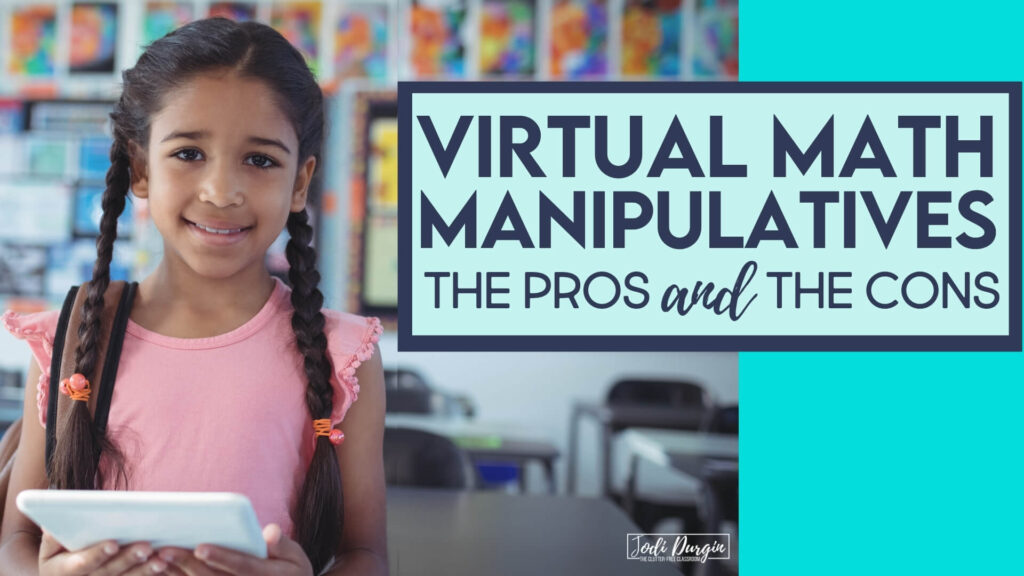
Why are Digital Manipulatives Important?
Digital math manipulatives are important because they give students access to math tools when they traditionally have not been. For example, students can use them when they are working on homework at home. These tools help students to understand, represent, and solve math problems. They provide a more scaffolded and supportive learning experience for students.
Online math manipulatives for elementary students can be especially helpful for children with special needs. Specifically, they may be a better tool for students who struggle with organization, executive functioning, or fine motor skills. They are a lot easy to maneuver for these populations. Offering the use of base 10 blocks online, for example, may be helpful. They can be a lot to manage for some students. Another example is letting students use digital unifix cubes. The concrete version can be difficult for some students to put together.
Additionally, students who struggle with attention may benefit from using digital manipulatives. They my be more engaged in math lessons when using these technology tools.
5 Disadvantages of Using Digital Math Manipulatives
Digital math tools are very helpful; however, they do have their shortcomings. Here are 5 disadvantages of using virtual math tools with elementary students:
- Students can’t actually touch them. This takes away the opportunities for their brains to make important connections. Research shows that there are huge benefits to students’ hands and minds working together. Hands-on learning experiences in math are essential!
- Some students will not use the tools appropriately. They may exhibit off-task behavior.
- Some students may not have access to technology or the internet at home.
- It can be difficult to find all of the digital math tools you need. Continue reading below for some helpful resources.
- It can be challenging to find free digital math manipulatives. Again, I’ve got you covered! Continue reading for free resources!
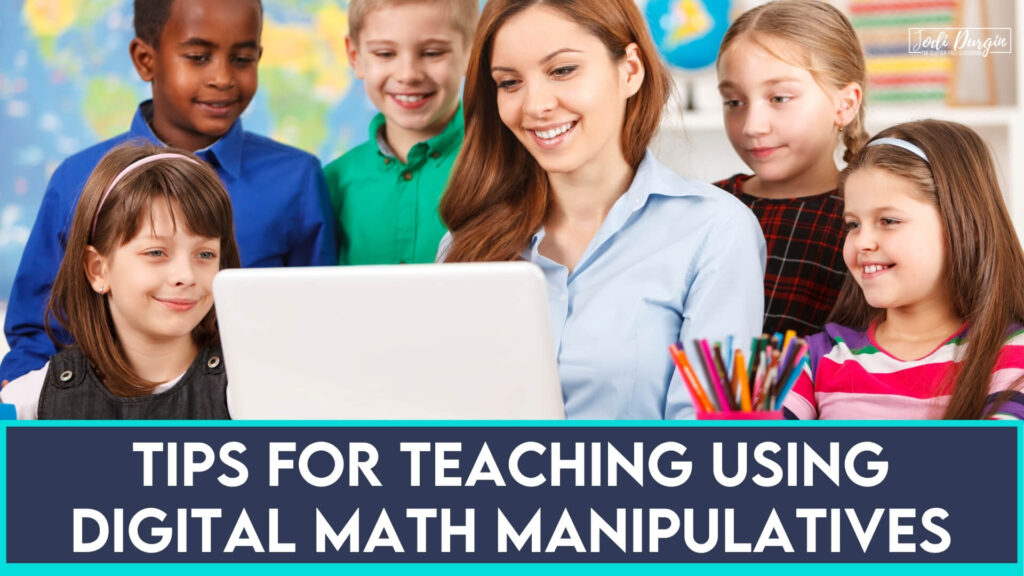
5 Ideas for Using Virtual Manipulatives to Teach Math
Are you unsure of how to incorporate virtual math tools? Below are 5 ideas for using them to teach math.
- Walk your students step-by-step through how to access virtual manipulatives when they are in school. Consider offering them a handout or video tutorial as well. This will help them confidently access the tools at home.
- Consider giving your students time to explore the virtual manipulatives. Let them share their findings with the class. This could look like giving students 5 minutes to explore the virtual geometry manipulatives. Then they pause and talk about what they found. Then they move to the next section.
- Use them when it is appropriate to do so. I was recently asked, “When should I have students use digital math manipulatives?” This is a great question. Concrete math manipulatives provide a hands on learning experience that helps students’ brains make important connections. Use the concrete ones when you can. Use the virtual manipulatives when using the concrete version is not possible. Examples of times when it may not be possible are for homework and remote learning.
- If you are using the virtual math tools in class, explicitly teach the expectations for how to use them appropriately. For example, students should use them as tools, not for play.
- Bookmark the virtual tool websites on your school computer. This will help you locate them quickly and easily.

List of Virtual Math Manipulatives You Need
The virtual math manipulatives will depend on your grade level. For example, a first grade teacher will have very different needs than a fifth grade teacher. Below are some examples of tools that may be helpful.
Operations and Algebraic Thinking Digital Manipulatives
Below are some examples of digital tools for teaching operations and algebraic thinking.
- unifix cubes
- math counters
- two color counters
- ten frame
- dominoes
- rekenrek
Numbers and Operations in Base Ten Digital Manipulatives
Below are examples of digital tools for teaching numbers and operations in base ten.
- base ten blocks
- place value disks
Numbers and Operations with Fractions Digital Manipulatives
Below are examples of digital tools for teaching numbers and operations with fractions.
- fraction tiles
- colorful counters
- fraction circles
- fraction bars
Measurement and Data Digital Manipulatives
Below are examples of digital tools for teaching measurement and data.
- money and coins
- cuisenaire rods
- clock
- color tiles
Geometry Digital Manipulatives
Below are examples of digital tools for teaching geometry.
- 3D shapes
- 2D shapes
- pattern blocks
- tangrams

3 of the Best Virtual Math Manipulatives Resources
Here are 3 of the best virtual math manipulatives:
1. Toy Theater
This first one is my favorite! It is very easy for students to navigate. Toy Theater has the following tools:
- geoboards
- fraction strips
- decimal strips
- percentage strips
- fraction bars
- fraction circles
- clock
- timer
- spinner
- dice
- coin flip
- number line
- tangrams
- place value chart
- place value disks
- abacus
- base ten blocks
- U.S. coins
- Canadian coins
- thermometer
- and more!
2. Didax Virtual Manipulatives
Another great option is Didax Virtual Manipulatives. It has the following tools:
- unifix cubes
- ten frames
- number lines
- rekenreks
- fraction tiles
- two color counters
- 120 number board
- color tiles
- base ten blocks
- math balance
- dice
- spinners
- pattern blocks
- place value disks
- geoboard
- and more!
3. Math Learning Center
The third resource on this list is Math Learning Center. It has the following tools:
- geoboards
- clocks
- number lines
- pattern shapes
- fraction bars
- money pieces
- and more!
Math Resources for 1st-5th Grade Teachers
If you need printable and digital math resources, then check out the math collections below. They will save you lots of time creating and search for materials. You will have a massive collection of resources at your fingertips.
Try a Collection of our Math Resources for Free!
In closing, we hope this information about digital manipulatives is helpful! They really are great tools for teaching math. If you haven’t already, bookmark those 3 websites mentioned above. They are 100% free! Next, we would love for you to try these math resources with your students. They offer elementary students opportunities to practice grade level concepts and skills in fun and engaging ways. Download these free printable math activities!
Lastly, check out these other math resources!
- 1st Grade Math Resources
- 2nd Grade Math Resources
- 3rd Grade Math Resources
- 4th Grade Math Resources
- 5th Grade Math Resources
